
Corinnidae is a family of araneomorph spiders, sometimes called corinnid sac spiders. The family, like other "clubionoid" families, has a confusing taxonomic history. Once it was a part of the large catch-all taxon Clubionidae, now very much smaller. The original members of the family are apparently similar only in that they have eight eyes arranged in two rows, conical anterior spinnerets that touch and are generally wandering predators that build silken retreats, or sacs, usually on plant terminals, between leaves, under bark or under rocks.

Beata is a genus of jumping spiders that was first described by George Peckham & Elizabeth Peckham in 1895.
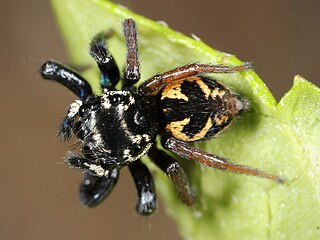
Corythalia is a genus of jumping spiders that was first described by Carl Ludwig Koch in 1850. The genus is distributed throughout most of the Western Hemisphere. Species of this genus are found in The Americas.
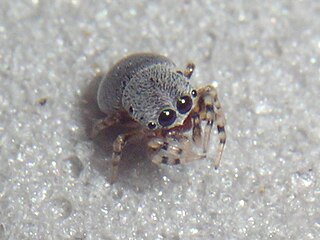
Cylistella is a genus of jumping spiders that was first described by Eugène Louis Simon in 1901.

Lyssomanes is a spider genus of the family Salticidae, ranging from South and Central America, up to the southern United States.
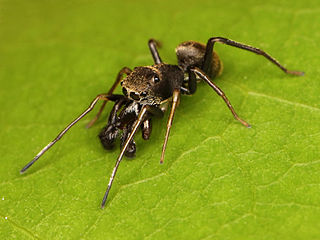
Martella is a genus of ant mimicking jumping spiders that was first described by George and Elizabeth Peckham in 1892. Species of this genus are found in South America and Central America.

Metaphidippus is a genus of jumping spiders that was first described by Frederick Octavius Pickard-Cambridge in 1901. The name is combined from Ancient Greek μετά "after, beside" and the salticid genus Phidippus.

Castianeira is a genus of ant-like corinnid sac spiders first described by Eugen von Keyserling in 1879. They are found in Eurasia, Africa, and the Americas, but are absent from Australia. Twenty-six species are native to North America, and at least twice as many are native to Mexico and Central America.

Micrathena, known as spiny orbweavers, is a genus of orb-weaver spiders first described by Carl Jakob Sundevall in 1833. Micrathena contains more than a hundred species, most of them Neotropical woodland-dwelling species. The name is derived from the Greek "micro", meaning "small", and the goddess Athena.
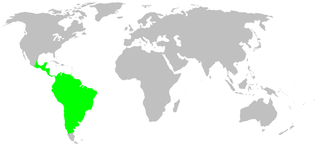
Senoculus is a genus of araneomorph spiders in the family Senoculidae, and was first described by Władysław Taczanowski in 1872. It is the only genus in the family Senoculidae.

Mangora is a genus of orb-weaver spiders first described by O. Pickard-Cambridge in 1889.
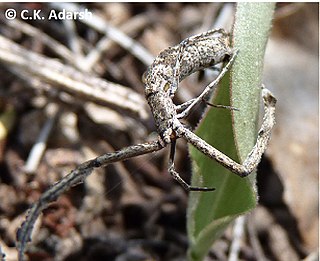
Miagrammopes is a genus of cribellate orb weavers first described by Octavius Pickard-Cambridge in 1870. These spiders have a unique shape and only four of their original eight eyes. They spin a single line of web, actively watching and jerking the line to catch their prey.
Macrophyes is a genus of anyphaenid sac spiders first described by O. Pickard-Cambridge in 1893.

Elaver is a genus of sac spiders first described by Octavius Pickard-Cambridge in 1898.
Mazax is a genus of corinnid sac spiders first described by O. Pickard-Cambridge in 1898.

Eustala is a genus of orb-weaver spiders first described by Eugène Simon in 1895.

Wulfila is a genus of ghost spiders first described by O. Pickard-Cambridge in 1895. They are easily recognized by their pale white elongated legs.















